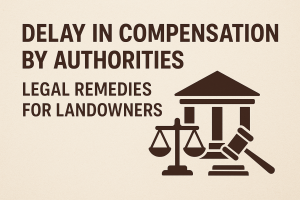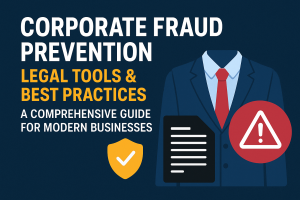A trademark is a unique identifier that distinguishes the goods or services of one entity from another. It can be a name, logo, symbol, tagline, shape, sound, or even a combination of these elements. In India, trademarks play a vital role in brand recognition, consumer trust, and legal protection against infringement. A registered trademark becomes an intangible asset, offering exclusive rights and legal remedies to the owner.
Examples:
- Words: Nike, Tata, Zomato
- Logos: ✔️ of Nike
- Taglines: “Just Do It”
- Shapes, Sounds, and Colors (in some cases)
Legal Framework for Trademarks in India
Trademark registration and protection in India are governed by the Trade Marks Act, 1999. This Act provides a comprehensive structure for registration, usage, opposition, renewal, and enforcement. The regulatory authority responsible for overseeing trademark applications and maintaining the trademark register is the Controller General of Patents, Designs and Trademarks, under the Ministry of Commerce and Industry.
Why is Trademark Registration Necessary?
Registering a trademark is crucial for legal ownership and brand protection. Here’s why:
➤ Legal Ownership
A registered trademark grants the owner exclusive rights to use the mark for the specified goods or services across India.
➤ Brand Protection
Prevents others from copying, misusing, or imitating your brand, logo, or product name.
➤ Business Asset
A trademark becomes an intangible asset, which can be sold, licensed, franchised, or assigned.
➤ Builds Trust
Customers associate registered marks with quality and authenticity, which builds consumer loyalty and trust.
➤ Essential for Enforcement
In case of infringement, only a registered trademark owner can file a suit under the Trade Marks Act.
Importance of Trademark Registration
Registering a trademark is critical for securing brand identity and gaining legal ownership. A registered trademark grants the proprietor exclusive rights to use the mark in connection with the specified goods or services. This exclusivity helps prevent unauthorized use, imitation, or duplication by competitors. Trademark registration not only protects intellectual property but also enhances brand credibility and builds consumer trust. It can become a valuable business asset that can be sold, licensed, franchised, or assigned, thereby offering commercial benefits.
In today’s digital and highly competitive marketplace, where businesses operate on e-commerce platforms and social media, having a registered trademark is essential. It enables effective enforcement of rights against counterfeiters, domain name infringers, and brand impersonators.
Trademark Classification in India (Nice Classification)
India follows the Nice Classification (NCL) — an international classification system dividing goods and services into 45 classes.
✅ Goods: Class 1 to 34
✅ Services: Class 35 to 45
| Class | Type | Examples |
| 3 | Cosmetics and Cleaning Products | Perfumes, Soaps, Lotions |
| 9 | Electronics | Computers, Phones, Software |
| 25 | Clothing | Apparel, Footwear, Headgear |
| 35 | Advertising & Business Services | Retail, Online Marketing, Branding Agencies |
| 43 | Food & Hospitality | Cafes, Restaurants, Catering |
Note: Choosing the correct class is essential. An incorrect classification may lead to rejection.
Trademark Registration Process in India
The trademark registration process in India involves multiple stages. Here is a detailed step-by-step explanation:
- Trademark Search: Before filing an application, a thorough search on the IP India Public Search Portal is recommended. This helps ensure that the proposed mark is unique and not already registered or applied for in the same class.
- Filing the Application: Once the search confirms availability, the application (Form TM-A) is filed either online or offline. The application must include details of the applicant, a clear representation of the trademark, and the appropriate class for the goods or services. Fees vary: Rs. 4,500 for individuals/startups and Rs. 9,000 for companies or LLPs per class.
- Examination: The Registrar examines the application to check for compliance with legal standards. The examiner reviews the distinctiveness, similarity with existing marks, and conformity with the Act.
- Examination Report: If the examiner finds no issues, the mark proceeds to publication. If objections arise (on absolute or relative grounds), an examination report is issued. The applicant must respond with a written reply.
- Hearing (if required): If the response is not satisfactory, the Registrar may call for a hearing. Based on the arguments, the application may be accepted, refused, or further clarified.
- Publication in Trademark Journal: If accepted, the mark is published in the Trademark Journal for four months. This allows the public to file an opposition, if any.
- Opposition Proceedings: If opposition is filed, both parties are given an opportunity to present their case. The Registrar decides whether the mark should proceed to registration or be refused.
- Registration and Certificate: If there is no opposition or if the opposition is decided in favor of the applicant, the trademark is registered. A registration certificate is issued, and the owner enjoys exclusive rights over the trademark.
Here’s a step-by-step breakdown with a visual chart.
Trademark Registration Flowchart:
[Trademark Search] → [Application Filing] → [Examination] → [Objection (if any)] → [Hearing/Reply] → [Advertisement in TM Journal] → [Opposition (if any)] → [Registration] → [Trademark Certificate Issued]
Step-by-Step Process: Explained
1. Trademark Search
Conduct a search on the IP India Public Search Portal to ensure the proposed mark is unique and not already registered or under process.
2. Filing the Application
- File Form TM-A online or offline.
- Include applicant details, trademark image, class of goods/services.
- Pay the fee: ₹4,500 (individual/start-up) or ₹9,000 (company/LLP per class).
3. Examination
The examiner evaluates:
- Distinctiveness
- Similarity with existing marks
- Compliance with the law
4. Examination Report
If no objection, it proceeds.
If objections (absolute or relative grounds), the applicant must reply.
5. Hearing (if required)
If the examiner is not satisfied with the written response, a hearing is scheduled.
6. Publication in Trademark Journal
Once accepted, the mark is advertised for 4 months in the Trademark Journal for public opposition.
7. Opposition (if any)
If opposed, proceedings are held before the Registrar.
If no opposition → registration proceeds.
8. Trademark Registration
A Trademark Certificate is issued.
Your brand is now officially protected.
Duration of Trademark Protection
A registered trademark is valid for ten years from the date of application. It can be renewed indefinitely for subsequent periods of ten years by paying the prescribed renewal fee. If the mark is not renewed, it gets removed from the register and can be claimed by others.
- ✅ Validity: 10 years from the date of filing.
- 🔁 Renewal: Can be renewed indefinitely every 10 years by paying a renewal fee.
- 🚫 If not renewed, it gets removed from the register.
Why Trademark Registration is Now a Business Essential
In today’s digital and hyper-competitive business environment:
🔹 E-commerce & Digital Growth:
Brands are more visible, but also more vulnerable to misuse.
🔹 Investor & Franchise Interest:
Investors check for IP assets before funding or acquiring a company.
🔹 Legal Enforcement:
Only registered trademarks get full legal protection under the Act.
🔹 Domain Name Disputes:
Trademark rights can help recover stolen or parked domain names.
What Can Happen Without Trademark Registration?
❌ Copycats may misuse your brand.
❌ Legal remedies become limited.
❌ Loss of customer trust and brand dilution.
❌ You can’t stop similar domain registrations or logo cloning.
❌ Your brand may be registered by someone else.
Consequences of Not Registering a Trademark
Operating without trademark registration exposes a business to several risks. These include:
- Inability to prevent others from using a similar or identical brand name
- Limited legal remedies against counterfeit or misuse
- Brand dilution and consumer confusion
- Risk of someone else registering your brand and claiming ownership
Without registration, enforcing brand rights becomes difficult, especially in court.
Role of a Trademark Attorney
While it is not mandatory to hire a legal professional, it is highly advisable. A trademark attorney ensures that:
- A comprehensive trademark search is conducted
- The correct class is selected and the application is drafted properly
- Objections and hearings are handled effectively
- Opposition matters are represented professionally
- Trademark protection aligns with broader business and branding goals
A legal expert minimises the chances of procedural errors and increases the likelihood of successful registration.
Should a Legal Professional Be Mandatory?
While not legally required, having a trademark expert:
- Reduces rejection risk
- Speeds up the process
- Ensures class accuracy
- Protects your rights from potential loopholes
For businesses serious about long-term brand building, professional assistance is no longer optional — it’s strategic.
Conclusion
Trademark registration is not just a bureaucratic formality; it is a vital step toward protecting your business identity and securing your competitive advantage. With growing digital exposure, increasing instances of brand theft, and rising competition, securing a registered trademark has become essential for businesses of all sizes. Engaging a trademark attorney adds strategic value, ensuring compliance, smooth processing, and long-term brand protection. Every serious entrepreneur and legal professional must prioritise trademark registration as an integral part of business development and legal strategy.



